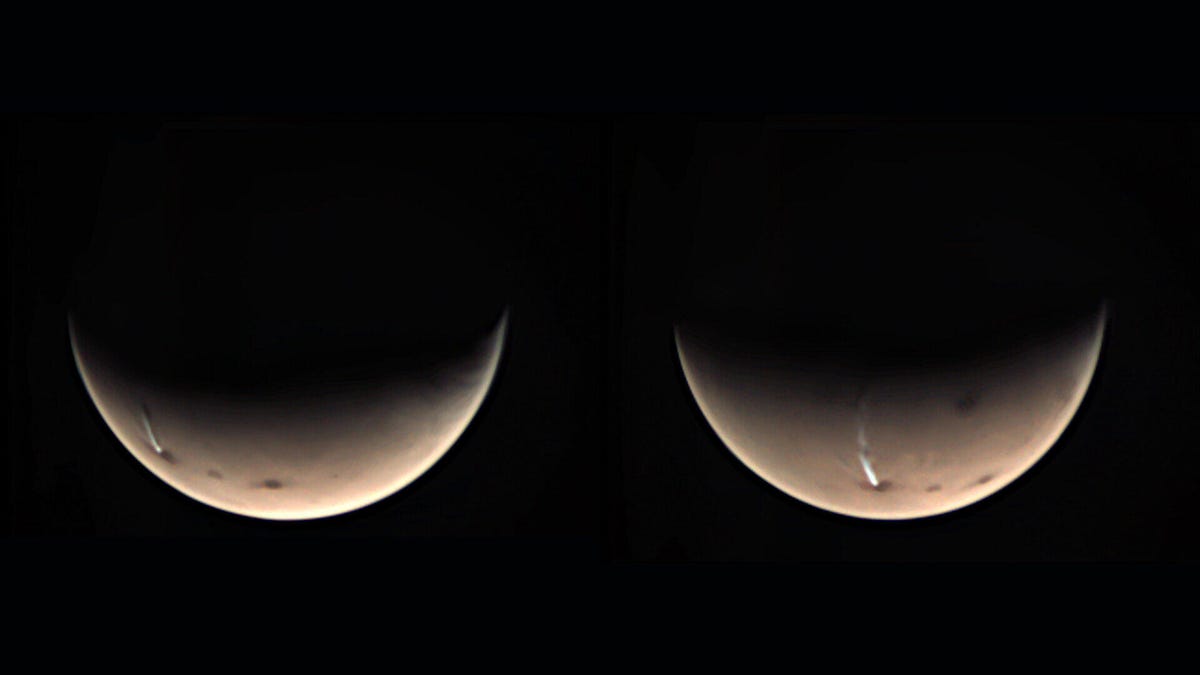Scientists uncover secrets of mysterious Mars cloud
A wild, snaking cloud stretching 1,100 miles appears to emerge from the Arsia Mons volcano on Mars.
In 2018, some corners of the internet thought there might a massive volcanic eruption on Mars, but it was a trick of the eye. A long, thin cloud appears above the Arsia Mons volcano on Mars seasonally, and now a team of scientists have gotten a better look at how it forms and dissipates.
Researchers investigated the cloud's lifecycle using a camera nicknamed "the Mars Webcam" on the European Space Agency's Mars Express spacecraft.
The cloud's ephemeral nature and the orbits of spacecraft around Mars have made the formation difficult to study. The Mars Webcam -- more formally known as the Visual Monitoring Camera -- has the resolution of a 2003 computer webcam, but it also has a wide field of view, which is why researchers put it into service to study the cloud.
This GIF of Mars Express images shows the evolution of the Arsia Mons cloud. The dark area indicates night. The blue line is a boundary between night and day.
The team published a paper on its findings late last year in the journal JGR Planets.
"Many Mars orbiters cannot begin observing this part of the surface until the afternoon due to the properties of their orbits, so this really is the first detailed exploration of this interesting feature," said study co-author Agustin Sánchez-Lavega of the University of the Basque Country in an ESA statement on Tuesday.
The cloud appears during the Martian spring and can stretch out to 1,120 miles (1,800 kilometers) in length. "It is the biggest 'orographic' cloud ever seen on Mars, meaning that it forms as a result of wind being forced upwards by topographic features (such as mountains or volcanoes) on a planetary surface," ESA said.
The cloud goes though a daily growth cycle that starts before sunrise and features a fast expansion rate as it extends out from Arsia Mons. It later evaporates as the day warms.
We get orographic clouds on Earth, but they don't reach the wild lengths of this one on Mars. "Understanding this cloud gives us the exciting opportunity to try to replicate the cloud's formation with models – models that will improve our knowledge of climatic systems on both Mars and Earth," Sánchez-Lavega said.
The Arsia Mons cloud is one of the wonders of Mars. It may be less of a mystery now, but it's just as fascinating as ever.
Follow CNET's 2021 Space Calendar to stay up to date with all the latest space news this year. You can even add it to your own Google Calendar.


